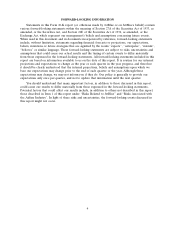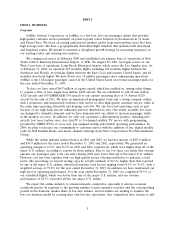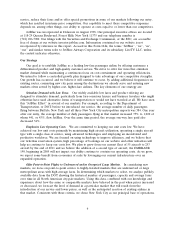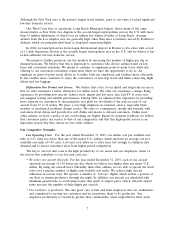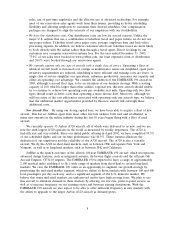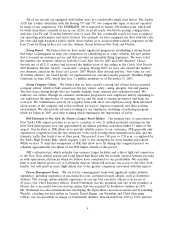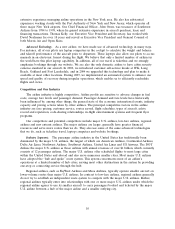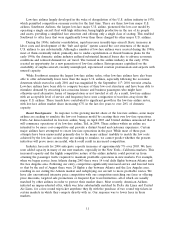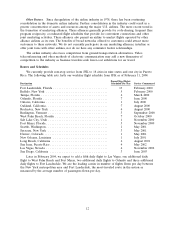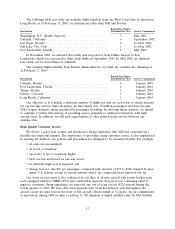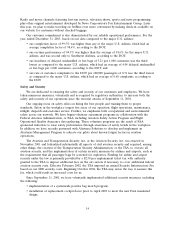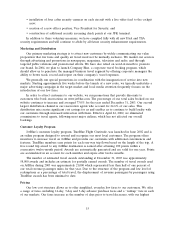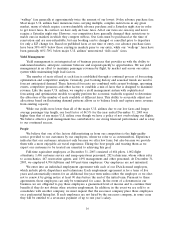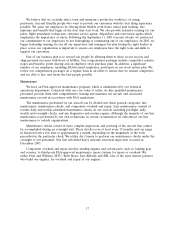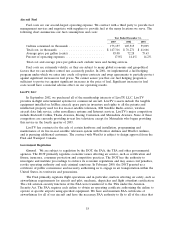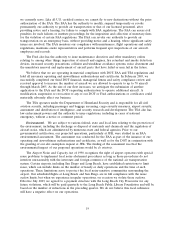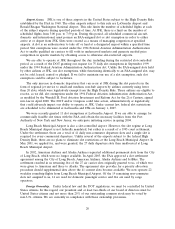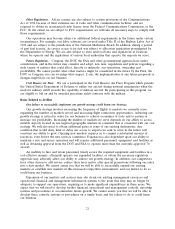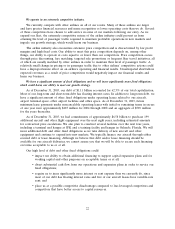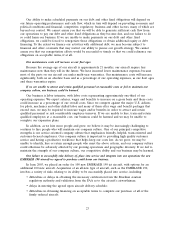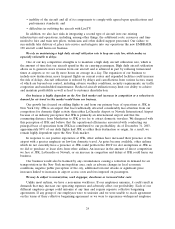JetBlue Airlines 2003 Annual Report Download - page 17
Download and view the complete annual report
Please find page 17 of the 2003 JetBlue Airlines annual report below. You can navigate through the pages in the report by either clicking on the pages listed below, or by using the keyword search tool below to find specific information within the annual report.Radio and movie channels featuring first-run movies, television shows, sports and news programming
plus other original entertainment developed by News Corporation’s Fox Entertainment Group. Later
this year, we plan to make traveling on JetBlue even more convenient by making check-in available on
our website for customers without checked baggage.
Our customer commitment is also demonstrated by our reliable operational performance. For the
year ended December 31, 2003, based on our data compared to the major U.S. airlines:
• our completion factor of 99.5% was higher than any of the major U.S. airlines, which had an
average completion factor of 98.6%, according to the DOT;
• our on-time performance of 84.3% was higher than the average of 81.6% for the major U.S.
airlines, and was second only to Southwest Airlines, according to the DOT;
• our incidence of delayed, mishandled or lost bags of 3.21 per 1,000 customers was the third
lowest as compared to the major U.S. airlines, which had an average of 4.04 delayed, mishandled
or lost bags per 1,000 customers, according to the DOT; and
• our rate of customer complaints to the DOT per 100,000 passengers of 0.31 was the third lowest
as compared to the major U.S. airlines, which had an average of 0.68 complaints, according to
the DOT.
Safety and Security
We are dedicated to ensuring the safety and security of our customers and employees. We have
taken numerous measures, voluntarily and as required by regulatory authorities, to increase both the
safety and security of our operations since the terrorist attacks of September 11, 2001.
Our ongoing focus on safety relies on hiring the best people and training them to proper
standards. Safety in the workplace targets five areas of our operation: flight operations, maintenance,
inflight, dispatch and customer service. Further, we emphasize both occupational and environmental
safety across our network. We have begun voluntary assessment programs in collaboration with the
Federal Aviation Administration, or FAA, including Aviation Safety Action Program and Flight
Operational Quality Assurance data gathering. These voluntary programs are the result of FAA
sponsored initiatives to raise safety performance through awareness of safety trends in the workplace.
In addition, we have recently partnered with Alertness Solutions to develop and implement an
Alertness Management Program to educate our pilots about known fatigue factors in aviation
operations.
The Aviation and Transportation Security Act, or the Aviation Security Act, was enacted in
November 2001 and federalized substantially all aspects of civil aviation security and required, among
other things, the creation of the Transportation Security Administration, or the TSA, to oversee all
aviation security, and the implementation of certain security measures by airlines and airports, such as
the requirement that all passenger bags be screened for explosives. Funding for airline and airport
security under the law is primarily provided by a $2.50 per enplanement ticket tax, with authority
granted to the TSA to impose additional fees on the air carriers if necessary to cover additional federal
aviation security costs. Effective February 2002, the TSA imposed an annual Security Infrastructure Fee
based on our 2000 security costs. Beginning October 2004, the TSA may revise the way it assesses this
fee, which could result in increased costs for us.
Since September 11, 2001, we have voluntarily implemented additional security measures, including
the following:
• implementation of a systemwide positive bag match program;
• installation of replacement cockpit doors prior to April 2003 to meet the new FAA mandated
design;
14


